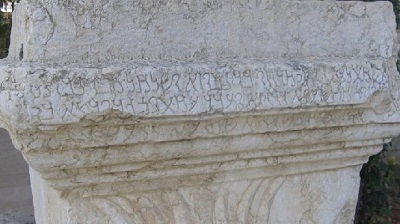The Mysterious Goddess of Palmyra
Publish date 26-11-2022
 The city of Palmyra, in present-day Syria, was an important commercial hub between East and West in ancient times. Known by the Aramaic name of Tadmor (palm) it was also called the "Bride of the desert" due to its importance as caravan center. The city is mentioned for the first time in an Assyrian text of the 2nd millennium BC, but it is in the Greco-Roman period that it acquires importance, first as the capital of an independent kingdom and then, starting from 19 AD, as a Roman province.
The city of Palmyra, in present-day Syria, was an important commercial hub between East and West in ancient times. Known by the Aramaic name of Tadmor (palm) it was also called the "Bride of the desert" due to its importance as caravan center. The city is mentioned for the first time in an Assyrian text of the 2nd millennium BC, but it is in the Greco-Roman period that it acquires importance, first as the capital of an independent kingdom and then, starting from 19 AD, as a Roman province.
Just to this period (2nd-3rd century AD) belong some inscriptions referable to a divinity never mentioned by name, to which we refer with the names of "he whose name is blessed forever" , “Lord of the universe” and “merciful”. To date, archaeologists have not been able to identify it precisely, but in a recent study, Polish researcher Aleksandra Kubiak-Schneider of the University of Wroclaw has proposed a possible solution to the mystery.
Comparing the names of the anonymous deity of Palmyra with the Mesopotamian ones of the 1st millennium BC, Kubiak-Schneider has noticed some similarities. For example Bel-Marduk, the supreme deity of Babylon, also worshiped in the majestic temple of Palmyra, is also called "merciful" while "Lord of the universe" was also referred to Baalshamin, a celestial deity. The anonymous divinity of Palmyra would therefore not be a single entity, but different divinities. According to Kubiak-Schneider, his name is never mentioned out of respect. The phrase "he whose name is blessed forever" would instead be generic, addressed to any divinity willing to intervene. The researcher notes how this interpretation testifies to the continuity of the cult from the pre-Hellenic phase to the Roman one.
According to independent researchers, not involved in the study, it is an interesting hypothesis, which however still needs to be discussed within the academic world. One of the critical points could be the fact that some of the Mesopotamian inscriptions considered date back centuries earlier than those of Palmyra.
Agnese Picco
NP August / September 2022







